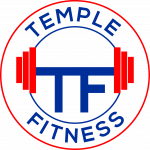How To
Seated Lat Pulldown - Plate Loaded
Instructions
The Seated Plate-Loaded Lat Pulldown Machine
Stepping into a gym, you’ll likely encounter a variety of equipment, each designed to hone and strengthen specific parts of your body. The seated plate-loaded lat pulldown machine is no exception. With its high bar and various weight plates, this machine may appear complex to a newcomer, but in reality, it’s user-friendly and tailored for both beginners and seasoned gym-goers. Its primary function is to allow users to simulate the motion of pulling something down from above, with the added resistance of weight plates.
Muscles Engaged
The seated plate-loaded lat pulldown predominantly targets the latissimus dorsi, the large muscles stretching across your back, from under the arms to the mid-back area. Additionally, secondary muscles engaged include the biceps, rhomboids, and the muscles of the mid-back. Collectively, these muscles are vital for a range of motions and daily activities, from lifting items to maintaining an upright posture.

Benefits of the Seated Plate-Loaded Lat Pulldown
This exercise offers an array of advantages. Firstly, it aids in building a strong back, which is essential for overall body strength and balance. A well-toned back also contributes to better posture, reducing the risks of backaches and related issues. Moreover, as the lat pulldown engages multiple muscle groups, it can help burn calories more efficiently, assisting in overall weight management. Lastly, users can easily modify resistance by adjusting the weight plates, ensuring consistent muscle progression as strength and endurance improve.
How to Use the Seated Plate-Loaded Lat Pulldown Machine:
Positioning: Begin by sitting on the machine with a firm posture. Adjust the thigh pads so that your legs are snugly secured, preventing you from lifting off the seat as you pull the bar down.
Grip: Reach out and grasp the bar with a wide overhand grip (palms facing forward). Ensure your hands are spaced wider than shoulder-width.
Initial Stance: Start with your arms fully extended and your back straight. Lean back slightly, looking forward with your chest puffed out.
Pulling Phase: Breathe out as you pull the bar down smoothly, leading with your elbows. Continue until the bar is approximately at chin level or touches the upper chest.
Return Phase: Slowly and controlled, release the bar back to its starting position while inhaling.
Repeat: Perform the desired number of repetitions, ensuring your form is maintained throughout.
Common Mistakes and Their Solutions
Avoiding these common pitfalls safeguards against potential injury and ensures you reap the full benefits of this compound exercise. Remember, quality always trumps quantity, especially in strength training! The Seated Plate-Loaded Lat Pulldown is a fundamental exercise for back development. Here are some common beginner mistakes and their solutions:
Leaning Too Far Back: Some beginners lean excessively backward when pulling down the bar, turning the exercise more into a row than a pulldown.
Solution: Stay upright, with a slight backward lean, ensuring your movement is vertical and not horizontal.
Using Momentum: Jerking or using body momentum to pull the weight down diminishes the effectiveness of the exercise and can lead to injury.
Solution: Execute the movement in a controlled manner, resisting the weight both on the way down and up.
Incomplete Range of Motion: Not extending the arms fully at the top or not bringing the bar down to the chest reduces the potential muscle engagement.
Solution: Ensure you fully stretch at the top and contract at the bottom of the movement.
Gripping Too Wide or Too Narrow: An inappropriate grip width can limit the engagement of the targeted muscles.
Solution: Grip the bar slightly wider than shoulder-width for optimal lat activation, adjusting based on comfort and specific muscle targeting.
Pulling with the Arms, Not the Back: Beginners might feel the tension in their biceps more than their back because they’re pulling with their arms.
Solution: Focus on pinching the shoulder blades together and think of the arms as mere hooks, pulling the elbows down and back.
Not Engaging the Core: Failing to engage the core can compromise posture during the exercise.
Solution: Tighten the abdominal muscles to provide stability and maintain a straight (or slightly arched) back.
Using Too Much Weight: Like other exercises, starting with a weight that’s too heavy can lead to poor form and potential injuries.
Solution: Start with a lighter weight, ensuring that you can perform the movement with proper form, then gradually increase as you get stronger.
Remember, for beginners, it’s crucial to start with a manageable weight to ensure proper technique and prevent injury. As you become more familiar with the machine and exercise, you can gradually increase the weight for added resistance. If you’re unsure about the correct technique or feel any discomfort, always seek guidance from one of our coaches. Proper form is crucial for both safety and effectiveness.
